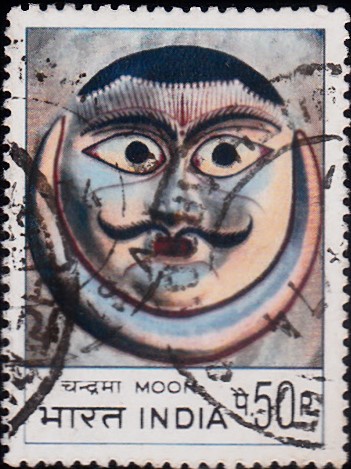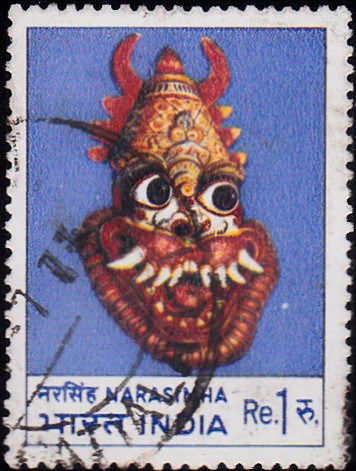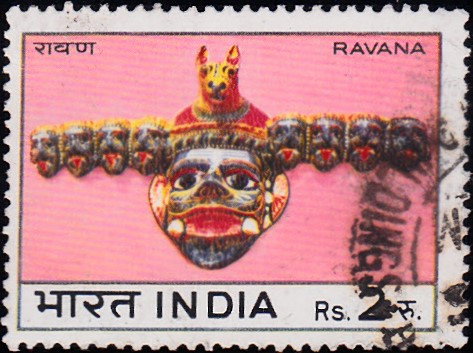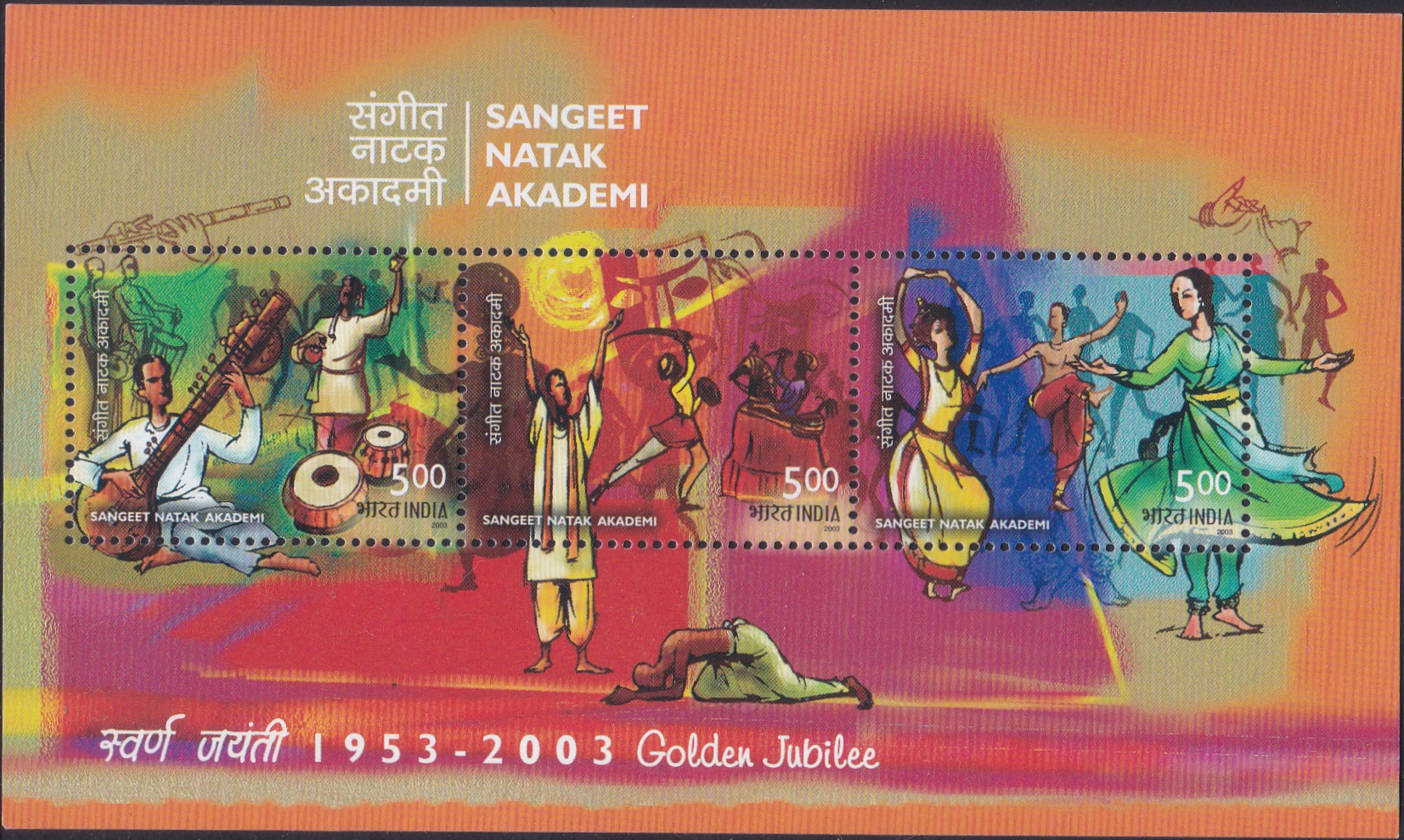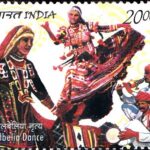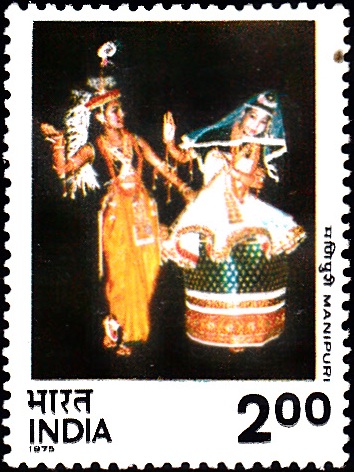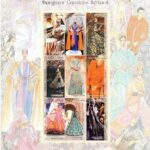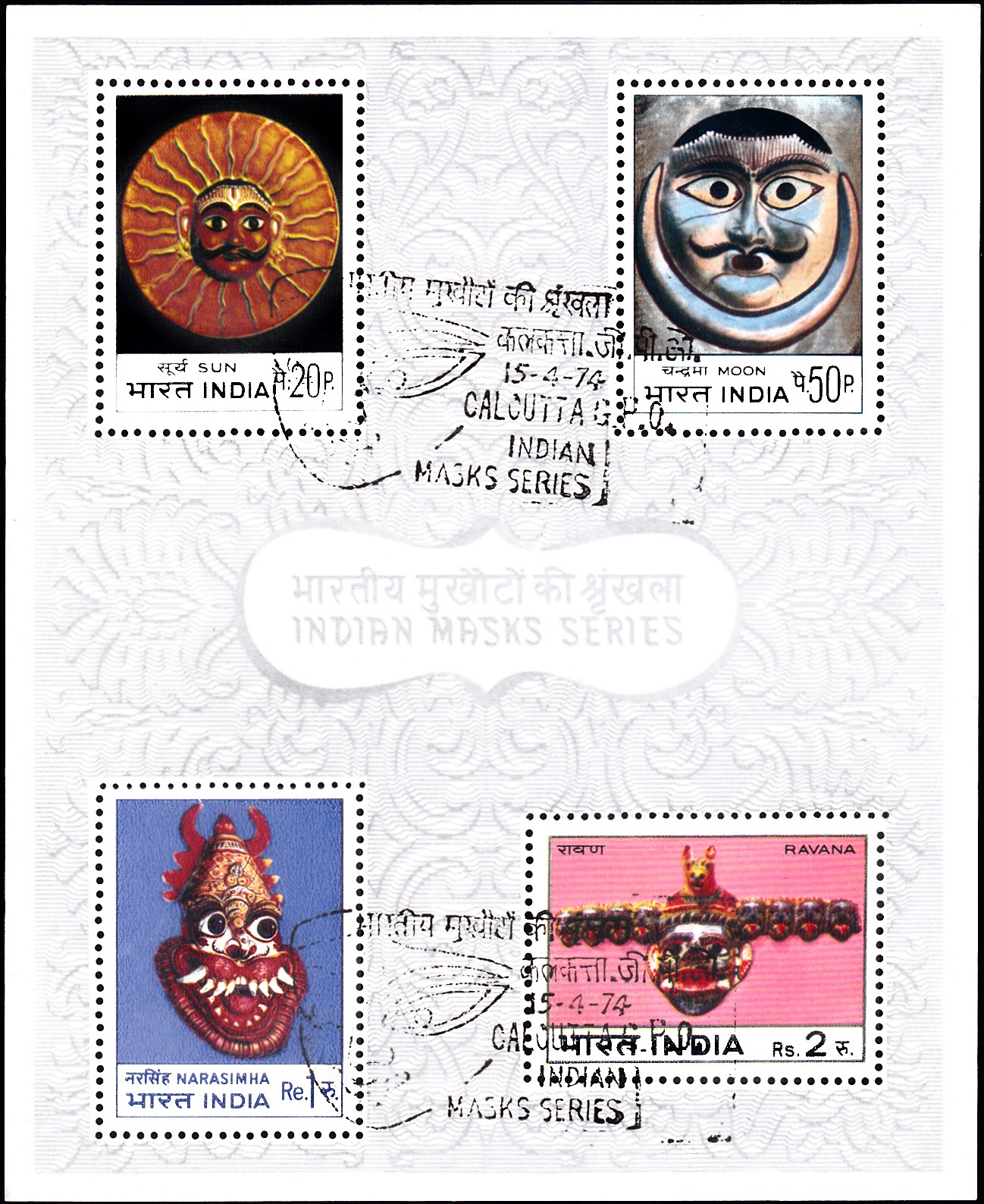
Indian Masks Series 1974
A Miniature Sheet consisting of 4 nos of commemorative postage stamps on the Masks of India : Sun, Moon, Narasimha and Ravana :
Issued on Apr 15, 1974
Issued for : The P&T Department has great pleasure in presenting a series of four stamps in multi-colours showing some of the masks used in India. The three masks – The Sun, the Moon and the Ravana – are papier-mache masks used in ‘Ramlila’ at Ram Nagar near Banaras and the fourth is the Narasimha mask usually made of light wood and traditionally used in Bhagwat Mela performances in South India. Perforated miniature sheet containing all the four stamps is also being brought out on this occasion.
Description of Design : The four stamps in the denomination of 20p, 50p, Rs. 1 & Rs. 2 depict the masks of Sun, Moon, Narasimha and Ravana respectively. Miniature sheet with these 4 stamps & silver ornamental margins.
Type : Miniature Sheet with Cancellation
Colour : Multi-colour
Denomination : 20 & 50 Paise, 1 & 2 Rupee
Overall Size : 3.91 x 2.90 cms.
Printing Size : 3.56 x 2.54 cms.
Perforation : 13 x 13
Watermark : Printed on unwatermarked Gummed P.G. Coated paper
Number Printed :
20 P. : 5 Million
50 P. : 3 Million
Re. 1 : 2 Million
Rs. 2 : 2 Million
Number per issue sheet : 35
Printing Process : Multicolour Gravure Process
Designed and Printed at : India Security Press
About :
- Throughout the ages, masks have held a strange fascination for mankind. Masks originated from the primitive man’s urge to control the rather hostile environment through magic and religion. He sought in them a medium to establish contact with the unseen world of spirits and to call on them to protect him against the dangers lurking in his surroundings. In India, which has been the cradle of one of the ancient civilisations, the entire gamut of uses of masks – sacrificial, totemic, ritual, processional, theatrical – is utilised.
- Perhaps, the earliest form taken by the mask is painting of the face and the body, with direct application to the skin of colouring matter – the Onges of the Andamans still use this method. With the advent of pastoral civilisation came ancestor worship; the masks often represented the spirits of the departed ancestors. With the coming of settled agricultural communities, masks came to be increasingly used in the service of religion, with magical beliefs evolving into organised religion, witch doctors becoming priests and ritual dances becoming part of increasingly elaborate religious ceremonies. Masks became a vehicle for projection of esoteric doctrines and interpretation of new concepts of the world. In more recent times, masks came handy in dramatising popular conceptions of gods, heroes and demonic characters in dance-drama featuring episodes from mythology and ancient lore.
- In India, themes for the traditional dance-drama are usually derived from Puranic mythology and popular epics like the Ramayana and the Mahabharata. In these dance-dramas, masks are used by the players to depict demons and super-human characters.
- In Uttar Pradesh, highly artistic masks are used in the ‘Ramlila’ performed during Dussehra at Ram Nagar near Banaras. These masks are generally made of papier-mache, gilded copper and zari work.
- In South India, during Bhagwat Mela (literally a concourse of devotees) when the story of the child devotee Prahlada is staged, the player who depicts Narasimha, the Lion-god who slays the demon king Hiranyakashipu, wears a magnificent ritual mask richly coloured and bejewelled and effectively conveying the blood-curdling fury of Narasimha. This mask is itself an object of veneration and when not in use, is kept inside a temple and prayers offered daily. Indeed, this practice of worshipping masks used in mythological plays is common in many parts of the country.



